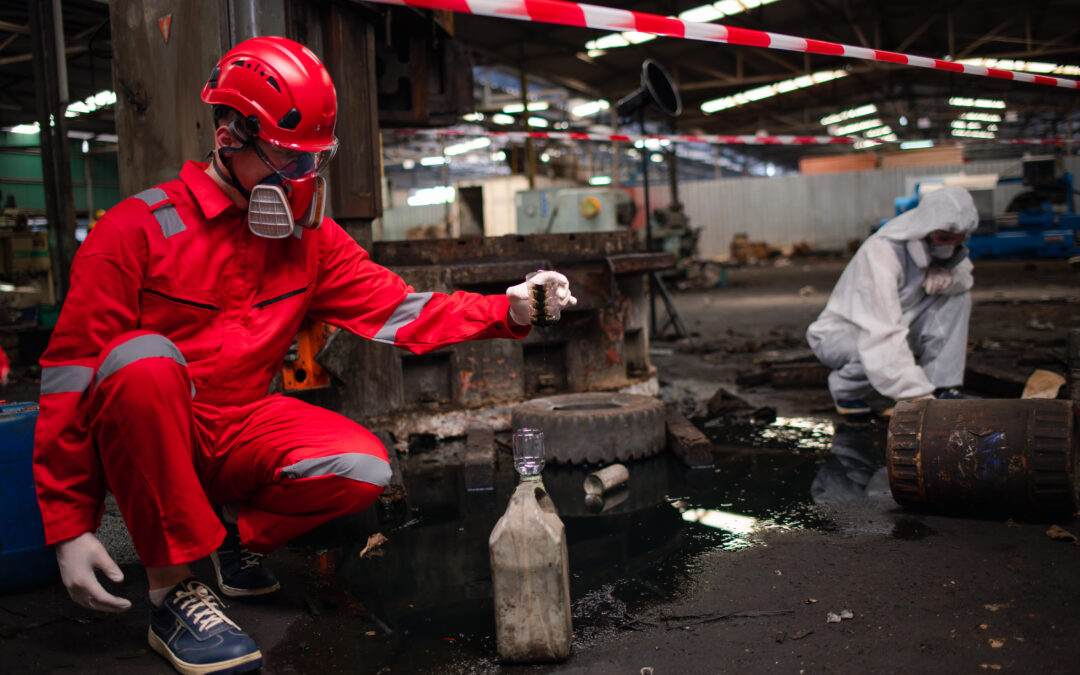Hydrogen sulfide (H2S) is a naturally occurring gas commonly found in oil and gas operations. It is a hazardous substance, posing significant risks to the health and safety of workers, as well as the environment. To maintain a secure and compliant working environment, companies operating in the oil and gas industry must be well-versed in hydrogen sulfide safety. Tiger Safety Rentals, a provider of specialized safety services and equipment tailored to onshore and offshore oil and gas companies worldwide, is committed to helping businesses enhance their H2S safety measures.
Hydrogen sulfide is a colorless, flammable gas that is often recognized by its distinct rotten egg smell. However, at higher concentrations, H2S is odorless due to olfactory fatigue, making the gas even more dangerous. Exposure to H2S can have severe health effects, ranging from mild irritation to death, depending on the concentration and duration of exposure. With such risks in play, it is crucial to establish comprehensive safety protocols in working environments where hydrogen sulfide may be present.
Adopting a strategic approach to hydrogen sulfide safety in oil and gas operations entails understanding the hazards, monitoring and detecting H2S, implementing appropriate mitigation measures, and providing ample training and necessary equipment for the workforce. By working alongside trusted partners like Tiger Safety Rentals, companies in the oil and gas industry can bolster their safety measures and better protect their workers from the dangers of hydrogen sulfide.
In this article, we will examine various aspects of hydrogen sulfide safety, discuss the implications of inadequate safety practices, and provide valuable insights into effectively managing the risks associated with hydrogen sulfide in the oil and gas industry.
Understanding the Hazards of Hydrogen Sulfide
1. Health and Safety Risks
Exposure to hydrogen sulfide can have varying health effects, depending on the concentration and duration of exposure:
– Low concentrations (0-100 ppm): Irritation of the eyes, nose, and throat, dizziness, and headaches.
– Moderate concentrations (100-700 ppm): Severe respiratory irritation, cough, nausea, and difficulty breathing.
– High concentration (700-1000 ppm): Unconsciousness, convulsions, and serious respiratory distress.
– Lethal concentrations (Over 1000 ppm): Immediate unconsciousness and death within minutes.
Beyond the health risks, H2S is also a flammable and corrosive gas, posing additional dangers to the environment, equipment, and infrastructure.
2. Regulatory Compliance
Numerous occupational health and safety regulations have been implemented to mitigate the dangers of hydrogen sulfide. Regulatory bodies such as OSHA and the United States Environmental Protection Agency (EPA) hold companies accountable for maintaining safe working conditions and minimizing H2S emissions.
Monitoring and Detection of Hydrogen Sulfide
1. Workplace Evaluation
Regularly evaluate the workplace to determine areas where hydrogen sulfide gas may be present. Areas that commonly experience H2S accumulation include drilling sites, pipelines, tanks, and sulfur recovery units.
2. Detection Tools and Equipment
Utilize fixed and portable gas detection systems to monitor hydrogen sulfide levels. Fixed gas detectors provide continuous monitoring around specific locations, while portable detectors can be used during maintenance or inspection activities. Ensure detection equipment is well-calibrated and maintained to deliver accurate readings.
Implementing Mitigation Measures
1. Engineering Controls
Incorporate engineering controls like proper ventilation and exhaust systems in areas prone to H2S accumulation. This can help disperse the gas, reducing the risk of exposure and the creation of flammable concentrations.
2. Establish Exposure Limits and Safety Procedures
Create and enforce exposure limits and safety procedures specific to H2S in the workplace. Examples may include setting safe work zones, exclusion zones, and establishing evacuation procedures in case of a gas release.
Training and Equipment for Workforce Protection
1. Hydrogen Sulfide Training
Provide mandatory hydrogen sulfide safety training for all workers who may be exposed to H2S in the course of their duties. A comprehensive training program should cover hazard identification, use of safety equipment, effective monitoring techniques, and emergency response procedures.
2. Personal Protective Equipment (PPE) and Respiratory Protection
Supply appropriate PPE for employees working in H2S-prone areas, including respiratory protection and personal gas detectors. Ensure workers are adequately trained in the correct usage, maintenance, and storage of their PPE.
Conclusion
Mitigating the risks associated with hydrogen sulfide in oil and gas operations is essential to maintain a safe working environment, preserve the health and well-being of workers, and maintain regulatory compliance. Implementing a comprehensive hydrogen sulfide safety strategy, supported by appropriate training, monitoring, and equipment, can greatly enhance the safety and reliability of your operation. Tiger Safety Rentals is dedicated to assisting you in developing and executing a robust hydrogen sulfide safety program, providing specialized safety services and equipment designed for the unique challenges faced in the oil and gas industry.

